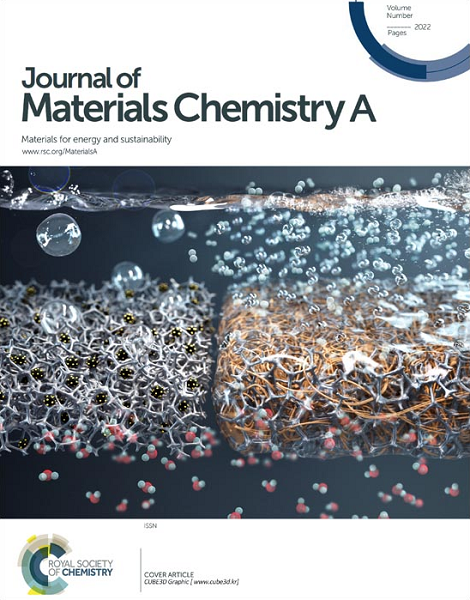光子诱导异构化使高性能聚合物太阳能电池成为可能
IF 10.7
2区 材料科学
Q1 CHEMISTRY, PHYSICAL
引用次数: 0
摘要
在活性层中引入同分异构体组分,有效地缓解了全聚合物太阳能电池(all-PSCs)中热力学不混相引起的形态缺陷。然而,传统的给体和受体材料异构化方法仍然复杂且难以实现,以增强光伏性能。为了克服这一限制,我们提出了一种涉及紫外激光照射聚合物材料溶液的光异构化策略。结构和光物理表征表明,整齐的聚合物薄膜结晶度增强,激子寿命延长,并通过异构体组分的掺入延长激子扩散长度。这些优点进一步增强了分子间π-π堆叠相互作用,并优化了通过逐层沉积制备的活性层中的垂直分布梯度,从而提供了理想的双连续互穿网络形态。值得注意的是,活性层的精细形貌增加了局部激子转化为电荷转移态的比例,从而促进激子解离,改善电荷传输,抑制电荷重组。最终,激光加工的PM6:PY-IT器件实现了18.21%的功率转换效率,并改善了稳定性,包括热稳定性和光稳定性。这项工作证实了紫外激光照射可以作为一种简单有效的方法来诱导有机光伏材料的异构化,为高效稳定的psc提供了光化学视角。本文章由计算机程序翻译,如有差异,请以英文原文为准。
Photon-induced isomerization enables high-performance polymer solar cells
The introduction of isomeric components into the active layers demonstrates effective mitigation of morphological defects arising from thermodynamic immiscibility in all-polymer solar cells (all-PSCs). Nevertheless, conventional isomerization methods for donor and acceptor materials remain complex and challenging to implement for intensifying photovoltaic performance. To overcome this limitation, we propose a photo-isomerization strategy involving ultraviolet laser irradiation of polymer materials in solutions. Structural and photophysical characterizations reveal that neat polymer films present enhanced crystallinity, prolonged exciton lifetime, and extended exciton diffusion length through the isomeric component incorporation. These benefits further synergistically strengthens intermolecular π-π stacking interaction and optimizes vertical distribution gradient in the active layers fabricated via layer-by-layer deposition, delivering an ideal bicontinuous interpenetrating network morphology. Notably, the refined morphology of the active layers increases the proportion of local excitons converting into charge transfer states to facilitate exciton dissociation, improves charge transport, and suppresses charge recombination. Ultimately, the laser-processed PM6:PY-IT devices achieve a promising power conversion efficiency of 18.21% and ameliorated stability including both thermal stability and photostability. This work confirms that ultraviolet laser irradiation can serve as a facile and effective approach for inducing isomerization of organic photovoltaic materials, offering a photochemical perspective toward efficient and stable PSCs.
求助全文
通过发布文献求助,成功后即可免费获取论文全文。
去求助
来源期刊

Journal of Materials Chemistry A
CHEMISTRY, PHYSICAL-ENERGY & FUELS
CiteScore
19.50
自引率
5.00%
发文量
1892
审稿时长
1.5 months
期刊介绍:
The Journal of Materials Chemistry A, B & C covers a wide range of high-quality studies in the field of materials chemistry, with each section focusing on specific applications of the materials studied. Journal of Materials Chemistry A emphasizes applications in energy and sustainability, including topics such as artificial photosynthesis, batteries, and fuel cells. Journal of Materials Chemistry B focuses on applications in biology and medicine, while Journal of Materials Chemistry C covers applications in optical, magnetic, and electronic devices. Example topic areas within the scope of Journal of Materials Chemistry A include catalysis, green/sustainable materials, sensors, and water treatment, among others.
 求助内容:
求助内容: 应助结果提醒方式:
应助结果提醒方式:


